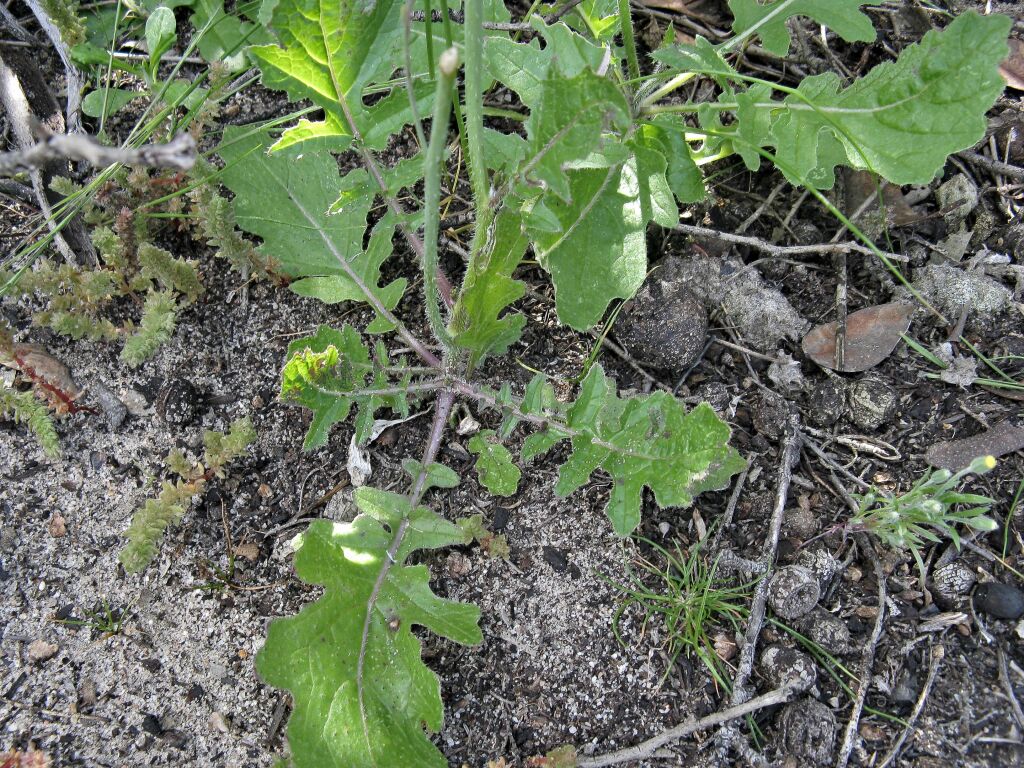Brassica tournefortii
Gouan Mediterranean TurnipAnnual, sometimes detaching near ground level at maturity and dispersing as a tumbleweed. Taproot long. Stems erect, to 90 cm high, herbaceous, branched, bristly at base to glabrous above. Basal leaves petiolate, with 4–10 pairs of irregularly-toothed lateral lobes, densely bristly underneath; upper leaves becoming sessile and bract-like towards apex of plant. Inflorescence initially with open flowers overtopping or equalling the buds, elongating with age. Sepals erect, 3–4 mm long; petals 5–8 mm long, pale yellow fading to white; stamens erect; ovary sessile. Fruit erect, 3–7 cm long (including beak), 2–3 mm wide; valves constricted between seeds, midrib not prominent; beak 8–20 mm long, with 1 or 2 seeds; pedicel 10–25 mm long; seeds c.2 mm wide, reddish-brown. Flowers Apr.–Oct.
LoM, MuM, Wim, VVP, VRiv, MSB, RobP, MuF, GipP, OtP, WaP, Gold, CVU, HSF. Also States. Native to Europe. Common weed in mallee areas, found sporadically in other areas but then usually as a crop weed, or on sandy soils at Black Rock, Beaumaris and Cheltenham.
Reportedly taints cow's milk, reduces crop yield and can become entangled in harvesting machinery (Hewson 1982).
Entwisle, T.J. (1996). Brassicaceae. In: Walsh, N.G.; Entwisle, T.J., Flora of Victoria Vol. 3, Dicotyledons Winteraceae to Myrtaceae, pp. 399–459. Inkata Press, Melbourne.
 Spinning
Spinning




